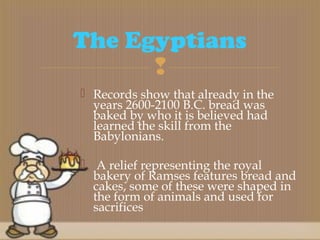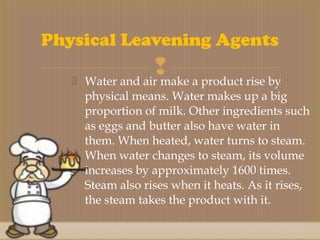The document provides a history of baking, covering developments from ancient Egypt and Babylon through the Roman Empire. It then discusses key ingredients used in baking, including various flours, leavening agents, sugar, eggs, lard, and salt. Flours discussed include bread flour, all-purpose flour, cake flour, whole wheat flour, and others. Leavening agents include baking soda, baking powder, yeast, and physical leaveners like steam. The roles of these ingredients in baking are also outlined.







































